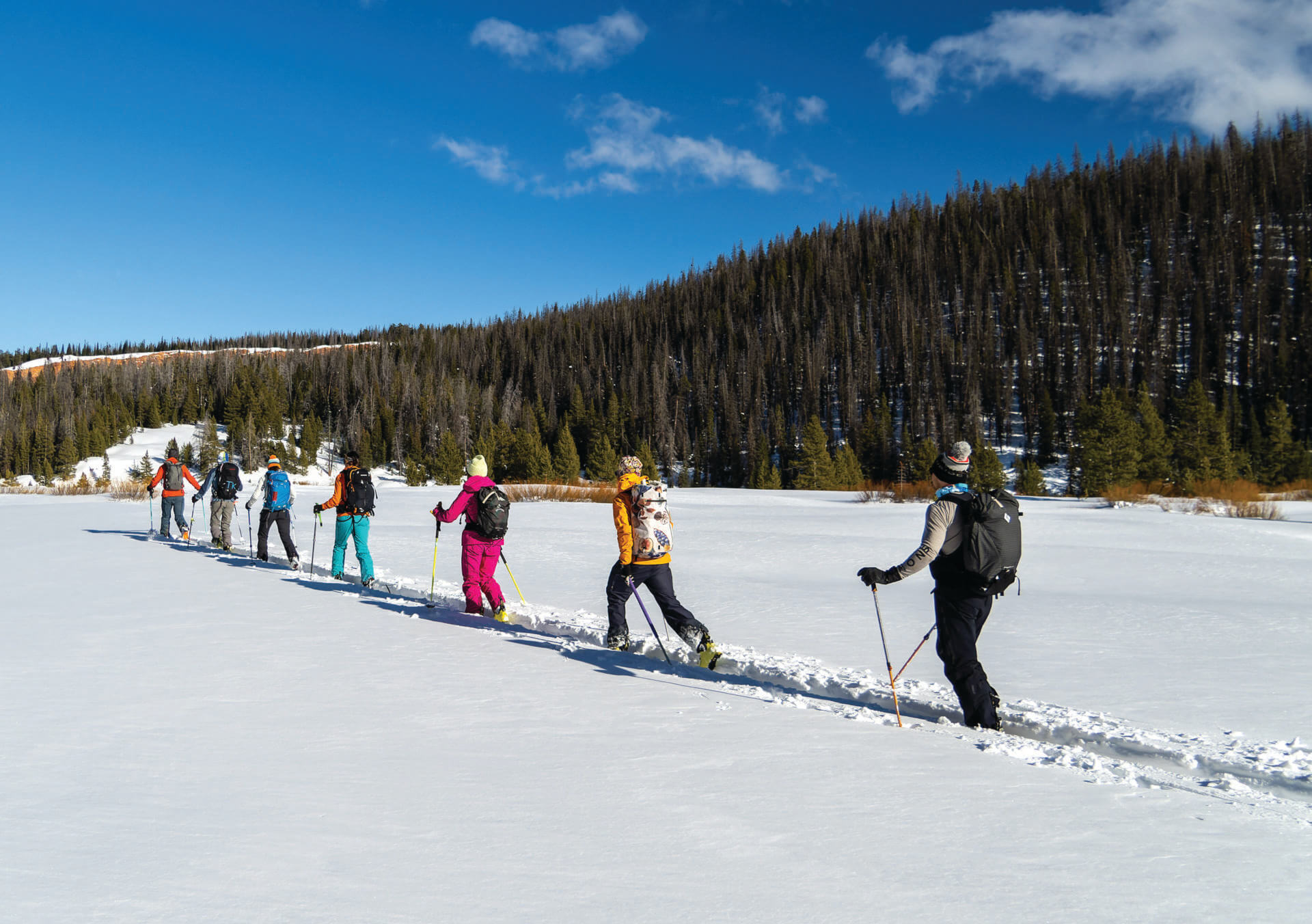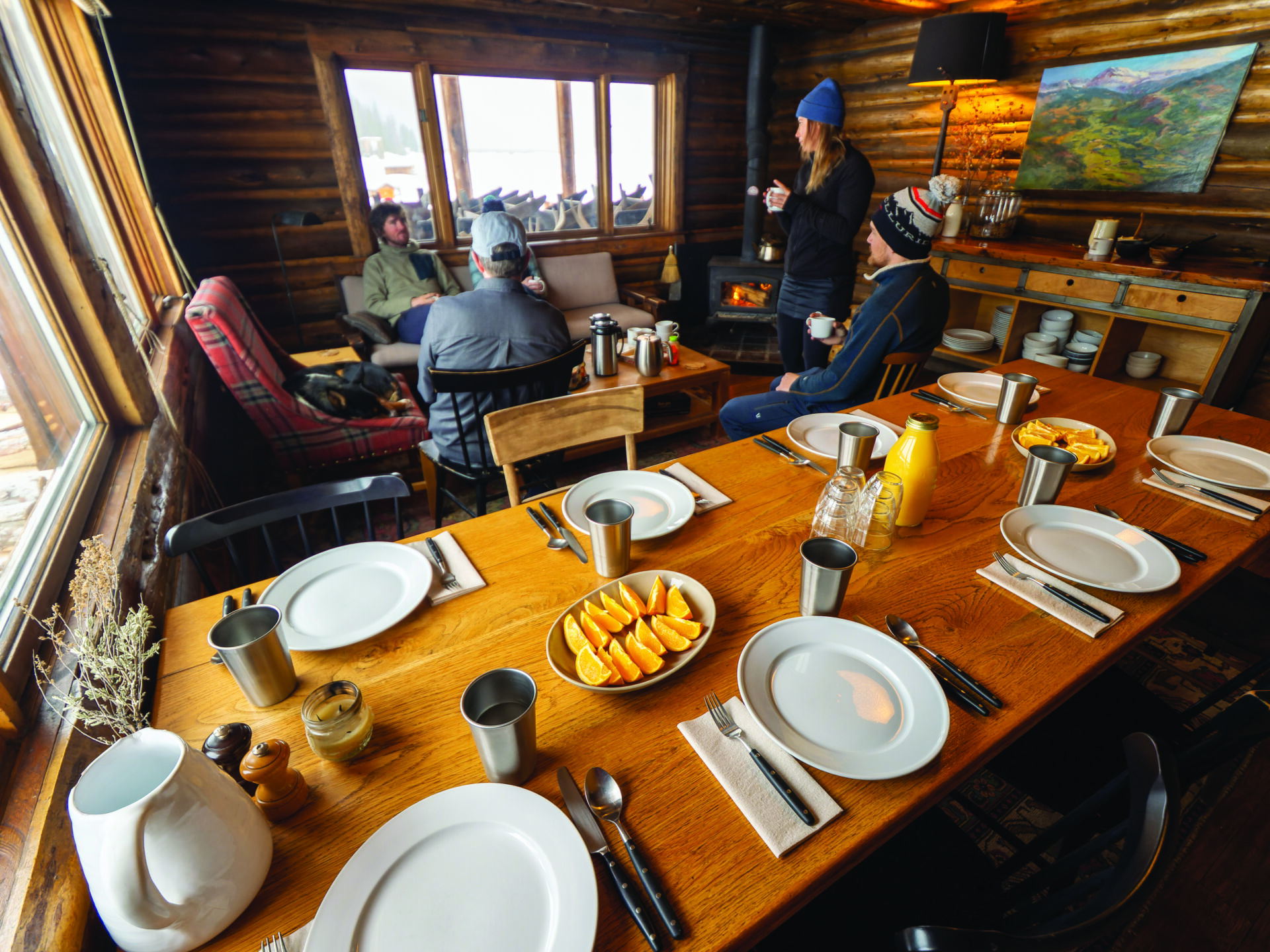Read The
Current Issue
Winter in the Wild
People make reservations a year in advance to spend a week of their summer at the remote Darwin Ranch, but it’s even more magical in winter.
//By Dina Mishev //photography By Derek Stal
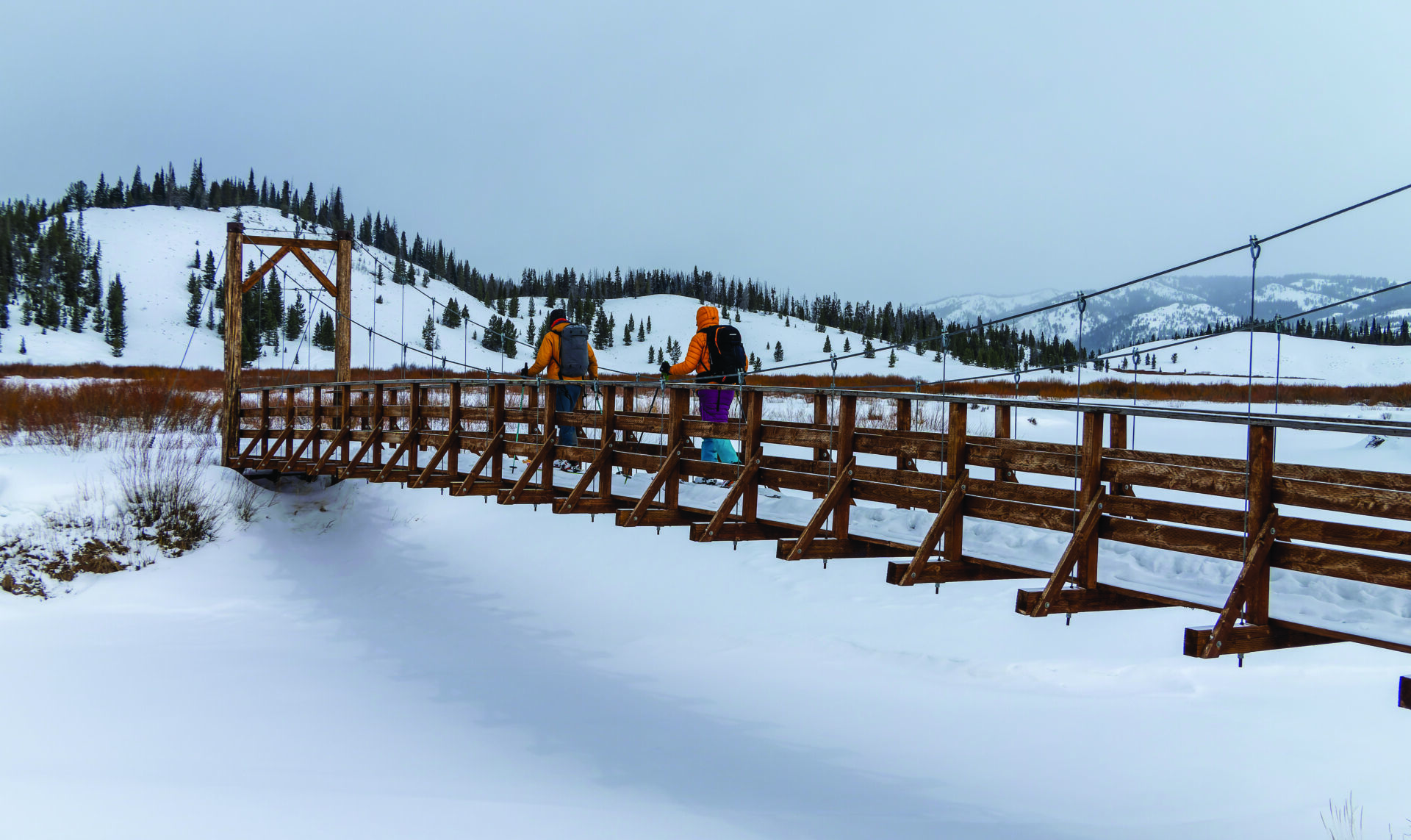
After we ski across a wooden bridge spanning the Gros Ventre River and pick our way through willowy wetlands, but before we disappear into thick pine forest in search of Ouzel Falls, my husband, Derek, and I take off our backcountry skis to hike up to the base of one of the many red cliff bands that help make the Gros Ventre Mountains the most colorful mountain range surrounding Jackson Hole.
The night before, while sipping Wyoming Whiskey in front of a fire in the dining room at Darwin Ranch, ranch manager Oliver “Ollie” Klingenstein told us there was a panel of petroglyphs on the cliffs near the start of the ski tour to Ouzel Falls. Why ski only to a waterfall when we could also see petroglyphs left behind by this area’s original inhabitants?
Derek and I thought we were coming to Darwin Ranch, a 160-acre spread adjacent to the Gros Ventre Wilderness and wholly surrounded by the 3.4-million-acre Bridger-Teton National Forest, for a backcountry ski experience unlike anything else available in the region. On our final full day at the ranch, looking at petroglyphs—they’re quite faded, but one is obviously an antlered animal—and later standing on the bank of the Gros Ventre River at the bottom of Ouzel Falls, a wide-spread sun crust has kept us from making any amazing turns. But we couldn’t care less.
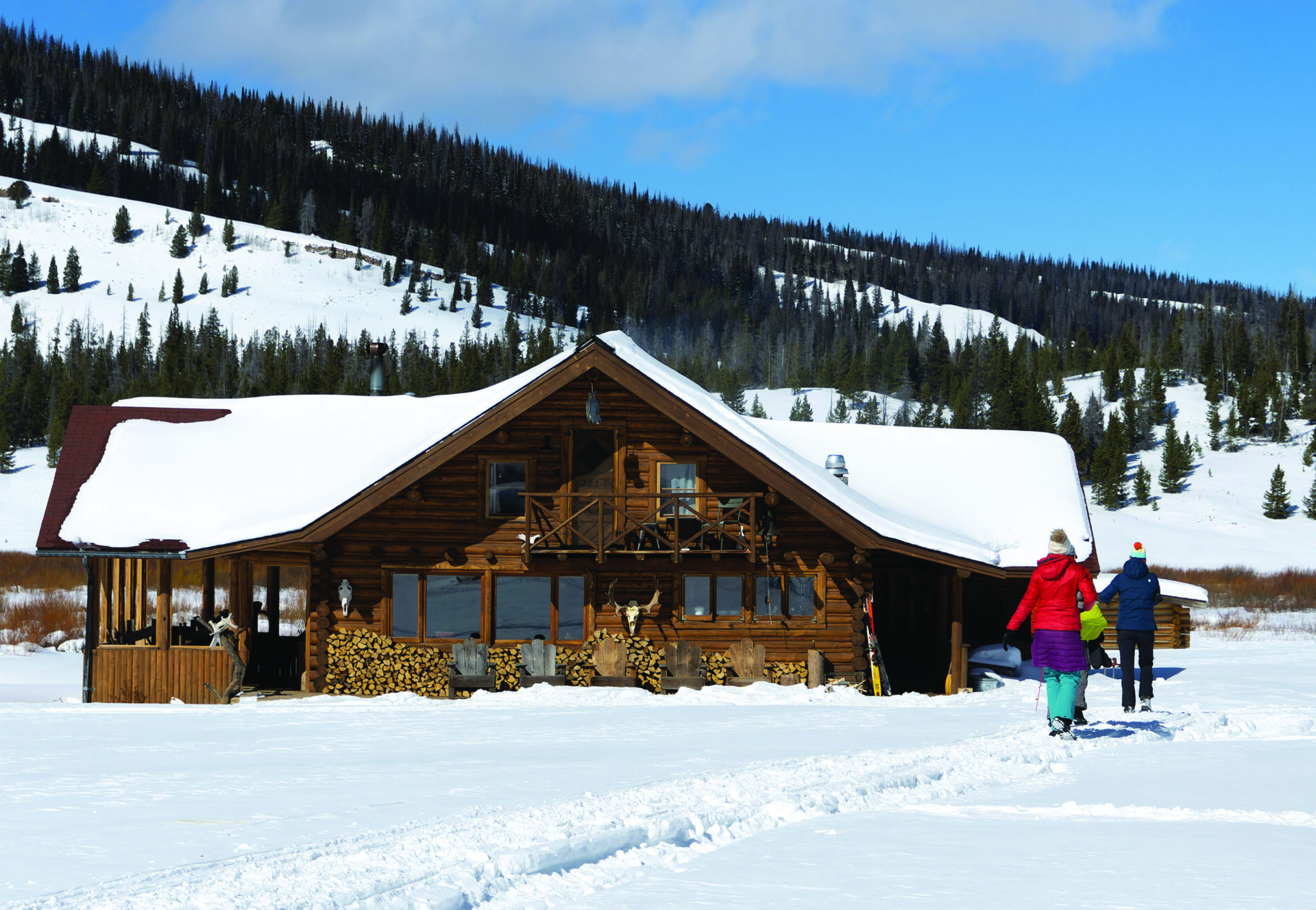
The bridge 10 minutes out of the parking lot where we left our cars and loaded up sleds with our luggage and gear—did it go over the Green River or to a private winter paradise?
Categorizing Darwin as a backcountry ski destination does it a disservice. Imagine the most idyllic winter vacation possible—a cozy main lodge, cabins with wood-burning stoves and wool blankets, a wood-heated hot tub, hearty meals, a landscape blanketed in snow as far as the eye can see—and then be prepared for awesomeness you don’t even know to imagine.
Homesteaded in 1901 by Fred Dorwin, the Darwin—a misspelling somewhere along the line turned Dorwin into Darwin—has been a guest ranch on and off since 1923, but last year was the first time it welcomed guests during the winter. Previously, it hosted guests for week-long summer stays and, in the fall, hunters. “It is such a special place, I really wanted people to be able to experience it in the winter,” says Klingenstein, a farrier and outdoorsman who has managed the ranch since his family bought it in 2014.
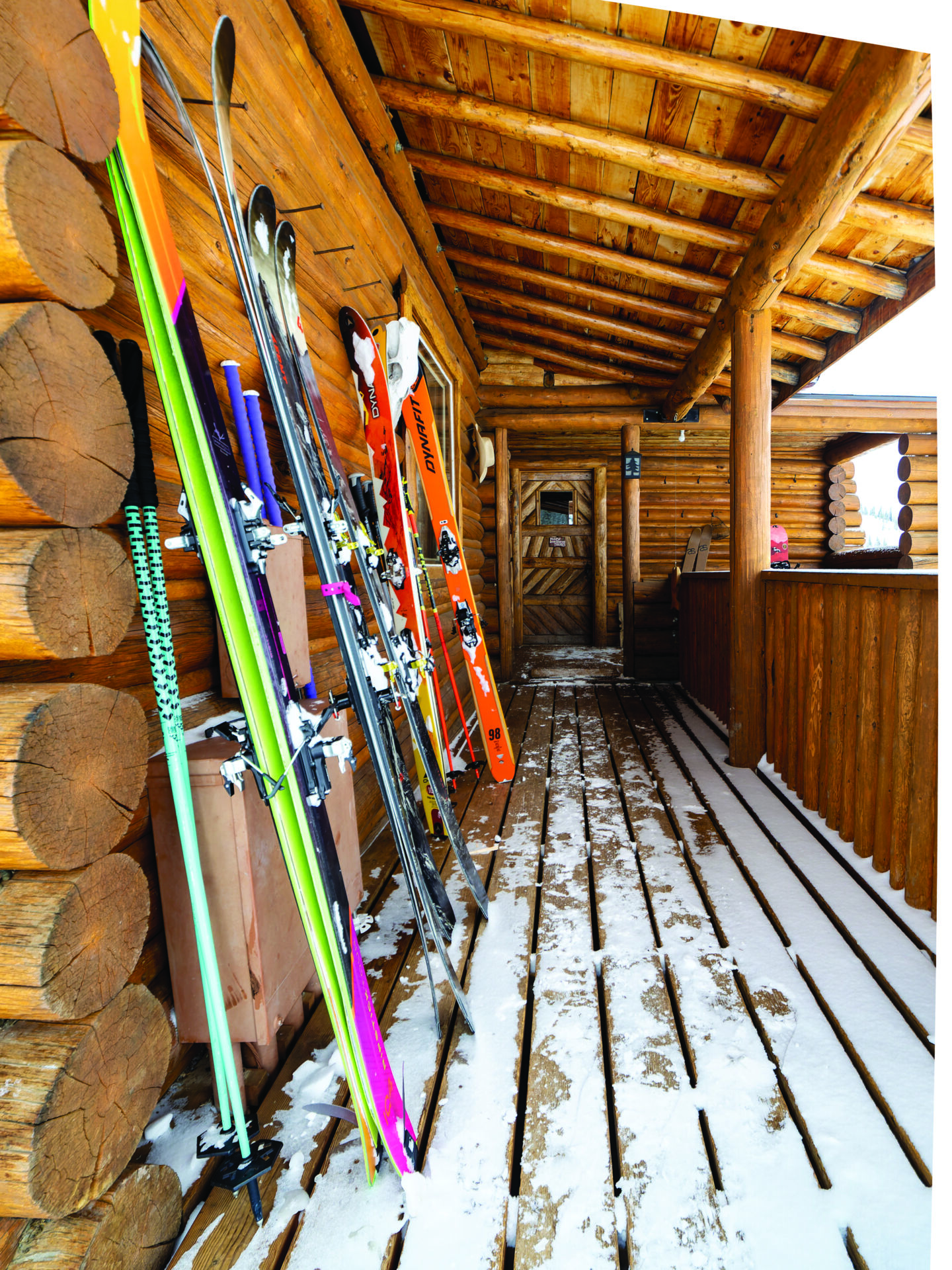
Whether summer or winter, the Darwin is not easy to get to. Only 33 miles from Jackson’s Town Square as the crow flies, in summer it’s a 100-mile, three-hour drive, and, in winter, a 75-mile drive followed by a 25-mile snowmobile ride. Prepping us for our visit to the ranch, Ollie told me that the Darwin is the most remote guest ranch in the Lower 48 states. I heard this and passed the information on to Derek, but I didn’t understand it until we’d been snowmobiling for two hours and it had been almost as long since we’d seen anything manmade, including other snowmobile tracks. Running into a family of yetis would have been less surprising than seeing other people. “Aside from the crew waiting for us at the ranch, there’s probably no one else around for 20 miles,” Klingenstein says. The bridge 10 minutes out of the parking lot where we left our cars and loaded up sleds with our luggage and gear—did it go over the Green River or to a private winter paradise?
Snowmobiling down switchbacks to the ranch, my question is answered: yes, the bridge did more than take us over the Green. Smoke rises from two chimneys in Darwin’s main lodge, where there’s a row of Adirondack chairs, a moose skull, and cords of stacked wood on the front porch. In the side yard, there’s a wood-heated hot tub. Guest cabins surround the lodge. Inside the lodge are a library, maps, paintings, and drawings of local animals and landscapes done by longtime guests; more skulls and taxidermied animal heads; board games; river-rock fireplaces; and jars filled with chai chocolate and lemon, currant, and oatmeal cookies.
“It is such a special place, I really wanted people to be able to experience it in the winter.”
—Oliver “Ollie” Klingenstein, Darwin Ranch manager
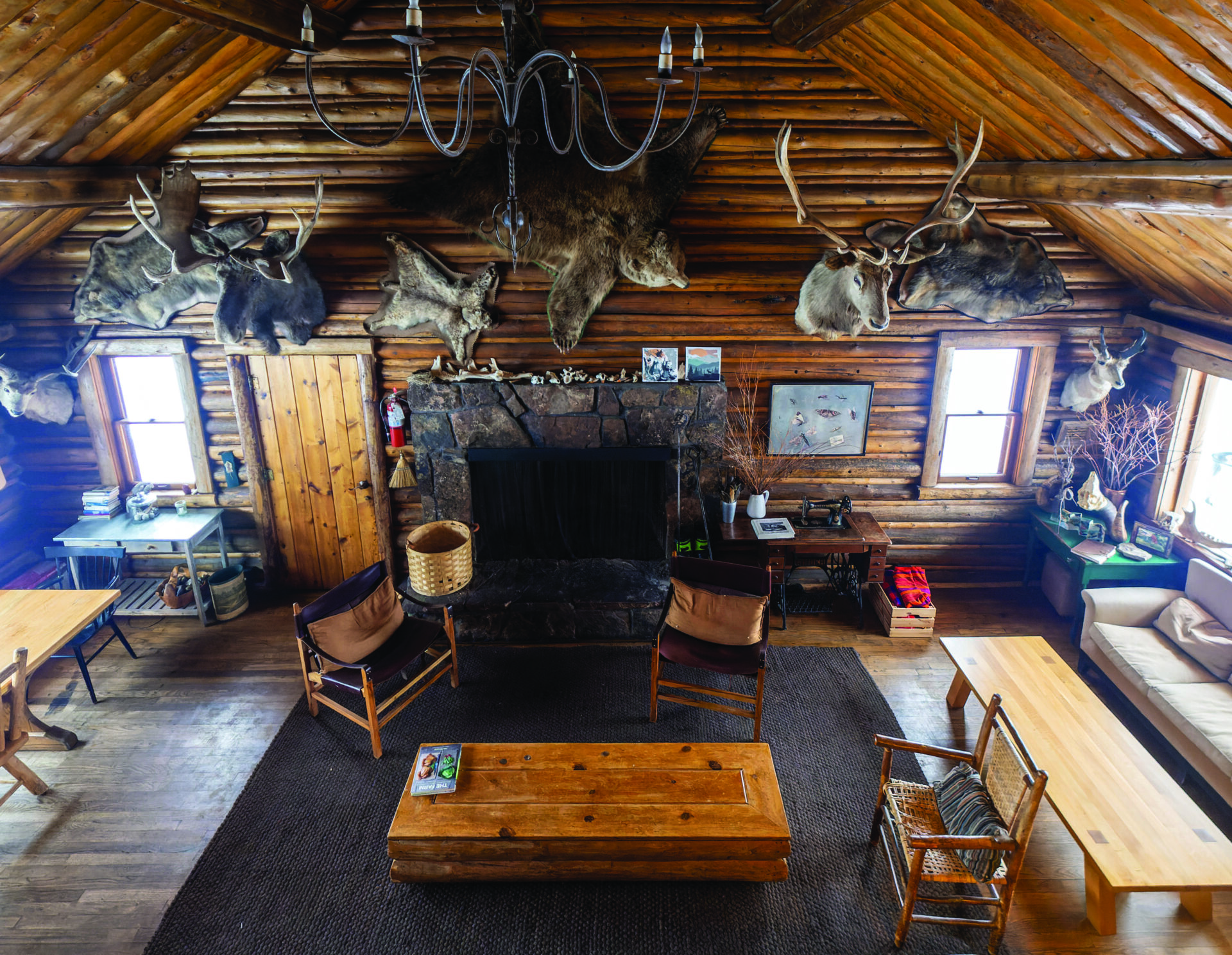
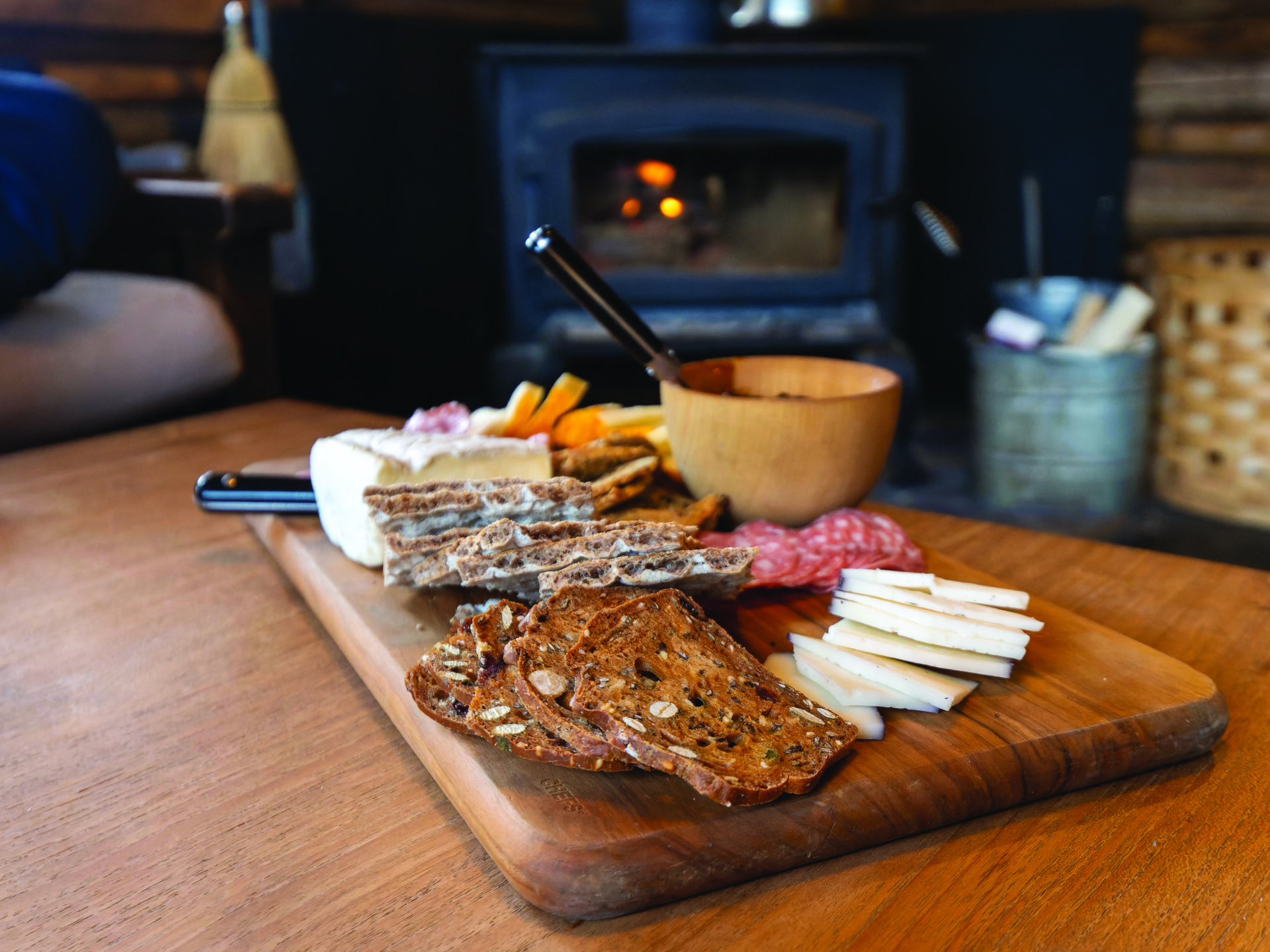
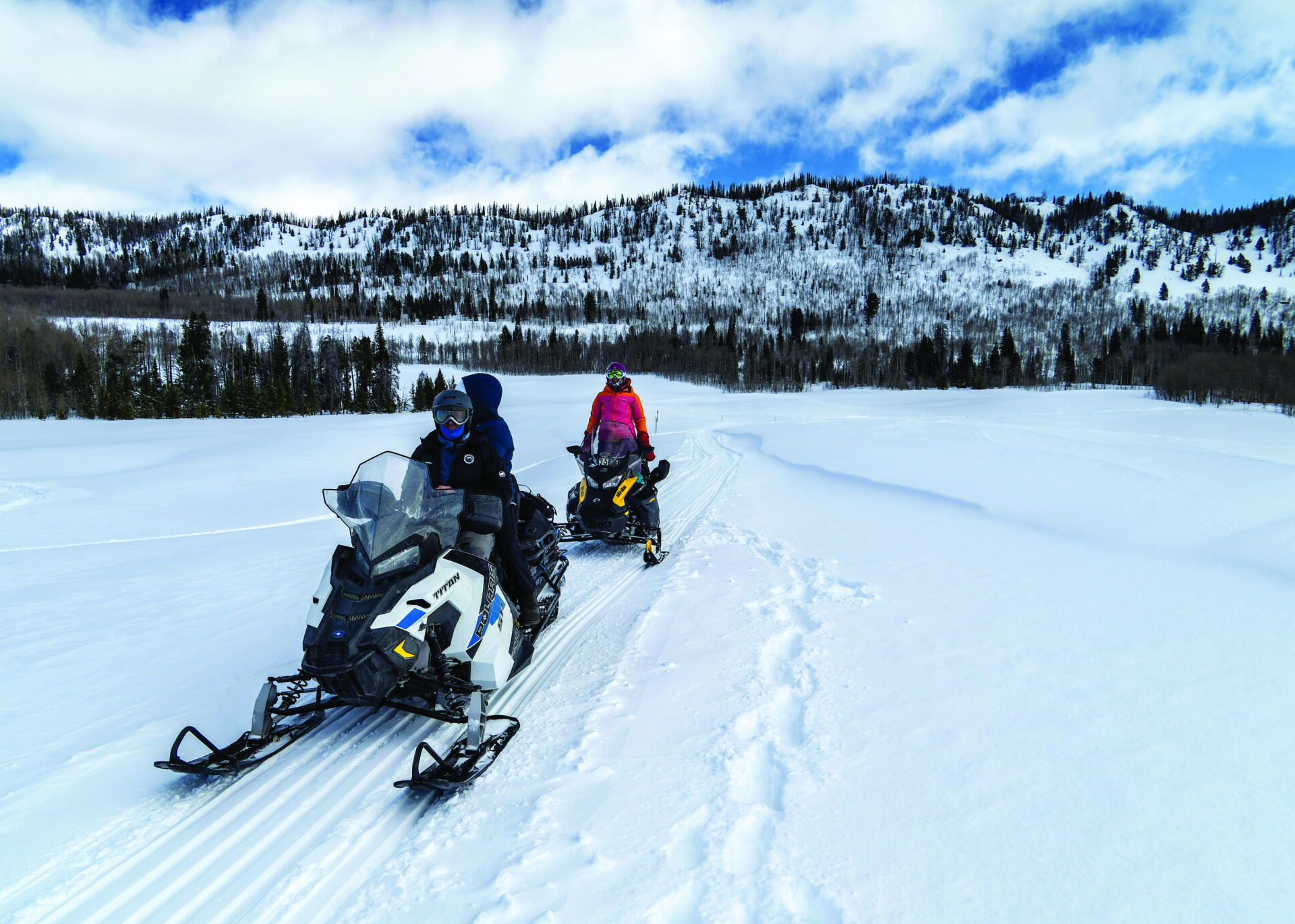
As we settle into our cabin and get a fire going in the wood-burning stove so that it’ll be nice and toasty when we return from an introduction-to-the-area afternoon ski tour, the lunch bell sounds. I missed this the first time I took in the front porch, but behind the Adirondack chairs and firewood is a triangle bell. One of the two sisters who share cooking duty is enthusiastically ringing it. I’ve been to remote places before, but never in such extreme comfort.
Over the next four days, the juxtaposition of the Darwin’s rustic refinement with our remoteness more than makes up for the abysmal ski conditions. Also, while backcountry skiing isn’t in the cards, backcountry touring is. Exploring the Gros Ventre Wilderness around the Darwin in winter without staying at the Darwin would require dragging heavy sleds while skiing and camping in the snow every night (snowmobiles are not allowed in Wilderness areas). Getting to Ouzel Falls this way would take days. But Derek and I do it after a breakfast of perfectly crisped bacon and blueberry pancakes and before snuggling into a couch in front of a fire with our Kindles and a dinner that is the best burger I’ve ever had. darwinranch.com JH
